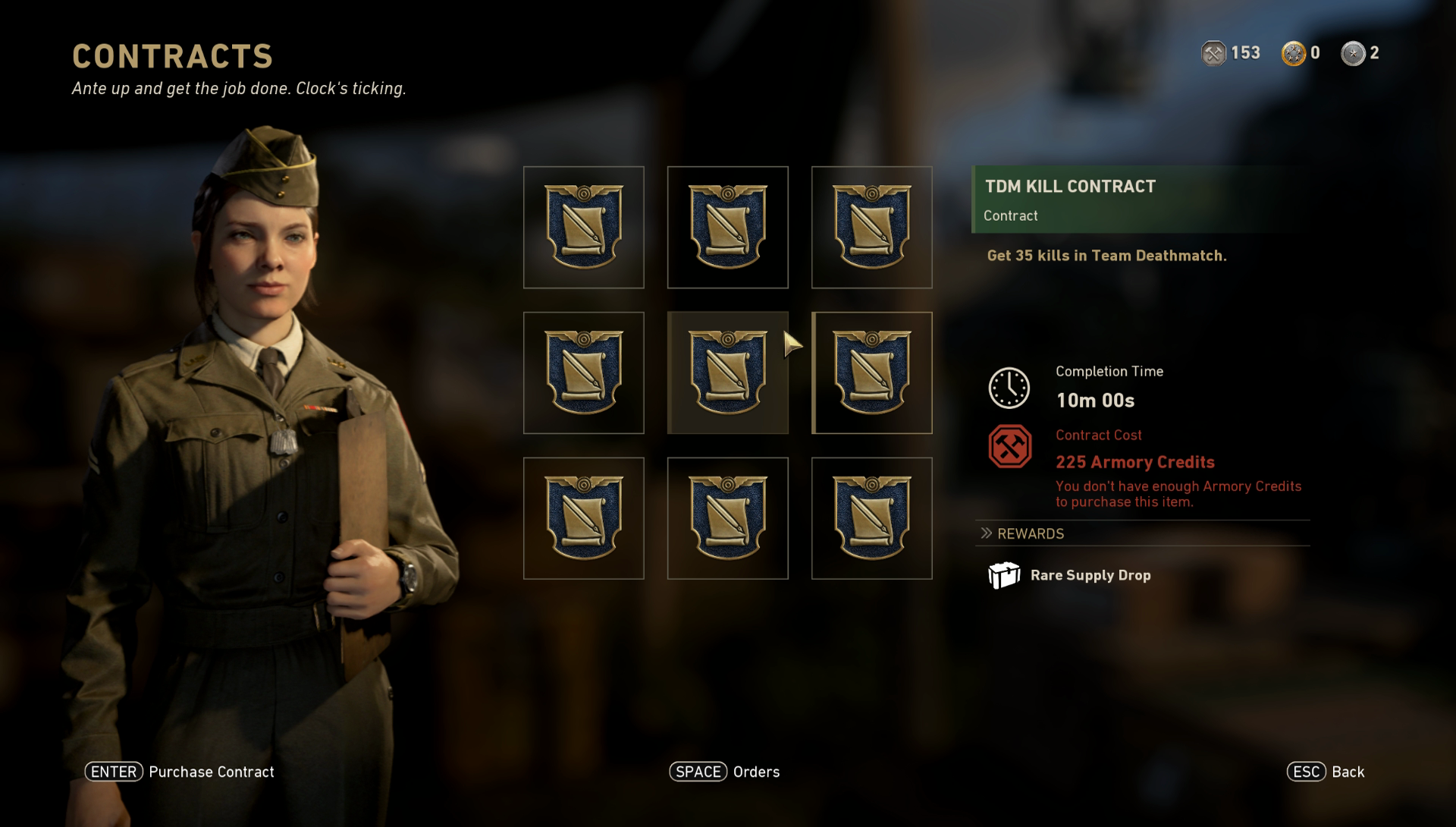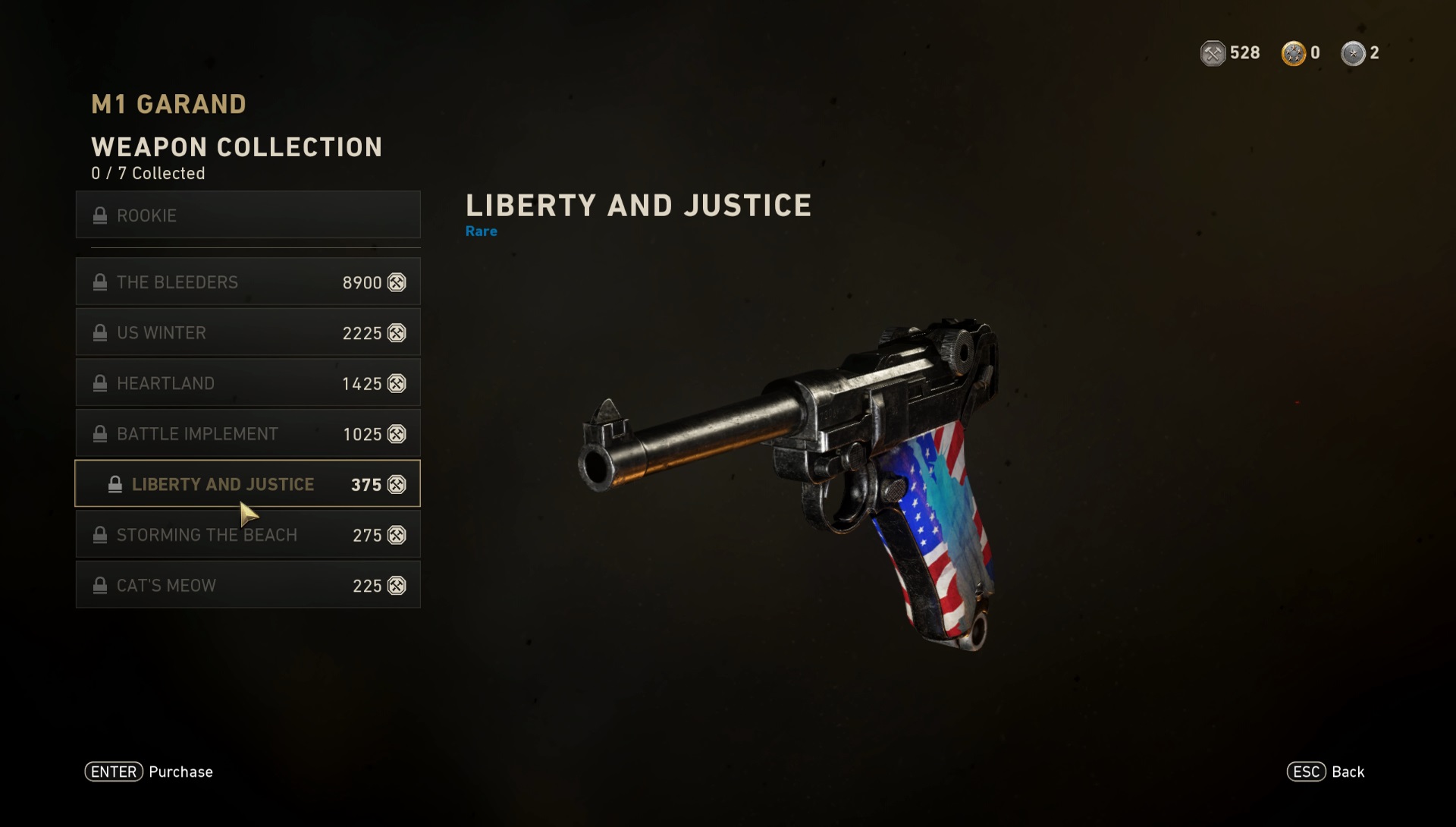How loot boxes work in Call of Duty: WWII
Watch other players open boxes to earn your own, complete challenges, or spend money—Call of Duty: WWII's loot boxes are focused on cosmetics, but is that enough?
Loot boxes are all the rage this season, and in every sense of the word. While some games use them as a simple cosmetic reward system, others offer up in-game benefits. You can typically obtain each through in-game currencies, but most loot boxes can also be purchased using real money. Worse, sometimes loot box systems are built entirely with your money in mind, and can detract from the typical reward loop you'd experience otherwise. It's hard to tell what's fair and what isn't anymore, so we're here to help out.
Call of Duty: WWII includes its own take on loot boxes called Supply Drops that fall from the sky and burst open to shower the player with a few goodies. They're flashy and feel as good to open as any package of Magic cards, but are they exploitative? With about 15 hours of multiplayer under my belt, my early conclusion is that they're just fine, with one major exception.
What loot boxes contain
The contents of Call of Duty: WWII's loot boxes are almost entirely cosmetic, rewarding gun skins, emotes, callsigns, and soldier apparel. You might find timed XP multipliers in the mix, which will grant bonus XP earnings for a weapon or Division alignment. However, in the zombie mode, supply drops may also contain consumable powerups, which grant temporary status effects during play.
How do you earn Supply Drops?
You can earn supply drops without spending money by...
...receiving them as a random reward at the end of a match.
...completing Contracts, timed challenges (get X kills, get X headshots, etc.) you purchase with Armory Credits (which you can earn for free on a timer or through completing certain challenges).

...completing daily and weekly orders, challenges without a time limit that you can turn in at any time, even after the daily/weekly selection refreshes. They don't require Armory Credits to purchase, but you can only hold three at once.
The biggest gaming news, reviews and hardware deals
Keep up to date with the most important stories and the best deals, as picked by the PC Gamer team.
...watching other players open supply drops. Curiously, you'll also be able to earn supply drops and other rewards through a new social score. By interacting with players in the HQ mode, you can inspect them and give or receive a one-time commendation, which increases your social score. But again, here's the icky bit: you can also increase your social score by watching others open their supply drops. This has its own reward system, though I haven't been in a live environment long enough to test it.
Supply Drop tiers and currency prices
[We're waiting for the game to go live to verify what each supply drop tier contains and what they'll cost you. Call of Duty points are returning to WWII as the premium currency, but we're not sure what kind of exchange for your dollar you'll get yet.]
Do the loot boxes feel fair?
On the surface, yes. The cosmetic focus means that anyone purchasing an abundance of supply drops won't grant an in-game advantage that isn't already present from the natural leveling system. The leveling system, between all the weapons and divisions and prestige options, is as diverse and wide as ever, meaning that even those with more weapon attachments aren't necessarily at a natural advantage against every loadout. I didn't ever feel like I was thirsty for more XP, but I'm sure once you level up enough the earnings will slow down and those XP multipliers will feel much more valuable.
It's also possible to purchase specific cosmetics found in supply drops at an HQ vendor using Armory Credits, which are doled out in small payments every few hours in HQ. Purchasing individual cosmetics is more expensive than purchasing supply drops, but the random chance is not a factor. Having the option to pick and choose feels like a privilege, though I'd rather it were the norm.

The supply drops are the most overtly exploitable in the zombies mode. Having the right powerups handy during a round can make a major difference, killing entire hordes outright or giving everyone the ability to one shot every monster. While players can only slot two at once, having a stockpile of the most helpful powerups will definitely help a team get further than if they only had a meager inventory to choose from, if any at all. Because it's not a competitive mode, powerup abuse only has the potential to diminish a group's experience, or incite frustration from those that don't have a limitless stockpile to pull from.
Earning crates through a social score feels gross, like we're being encouraged to feel envy, especially because it's paired with a system that rewards friendly player behaviors. I like seeing what other people dress their soldiers in, but the result is something like a dystopian future mall where we're rewarded for buying useless items with useless items. It feels harmless, and that's exactly what worries me.
Being rewarded for material envy would be fine if you couldn't purchase supply drops with real money, and even with the option, supply drop voyeurism still isn't quite as concerning as Activision's recent patent that uses matchmaking to set players up with prettier people. It just feels like the first step in normalizing something similar.
James is stuck in an endless loop, playing the Dark Souls games on repeat until Elden Ring and Silksong set him free. He's a truffle pig for indie horror and weird FPS games too, seeking out games that actively hurt to play. Otherwise he's wandering Austin, identifying mushrooms and doodling grackles.


